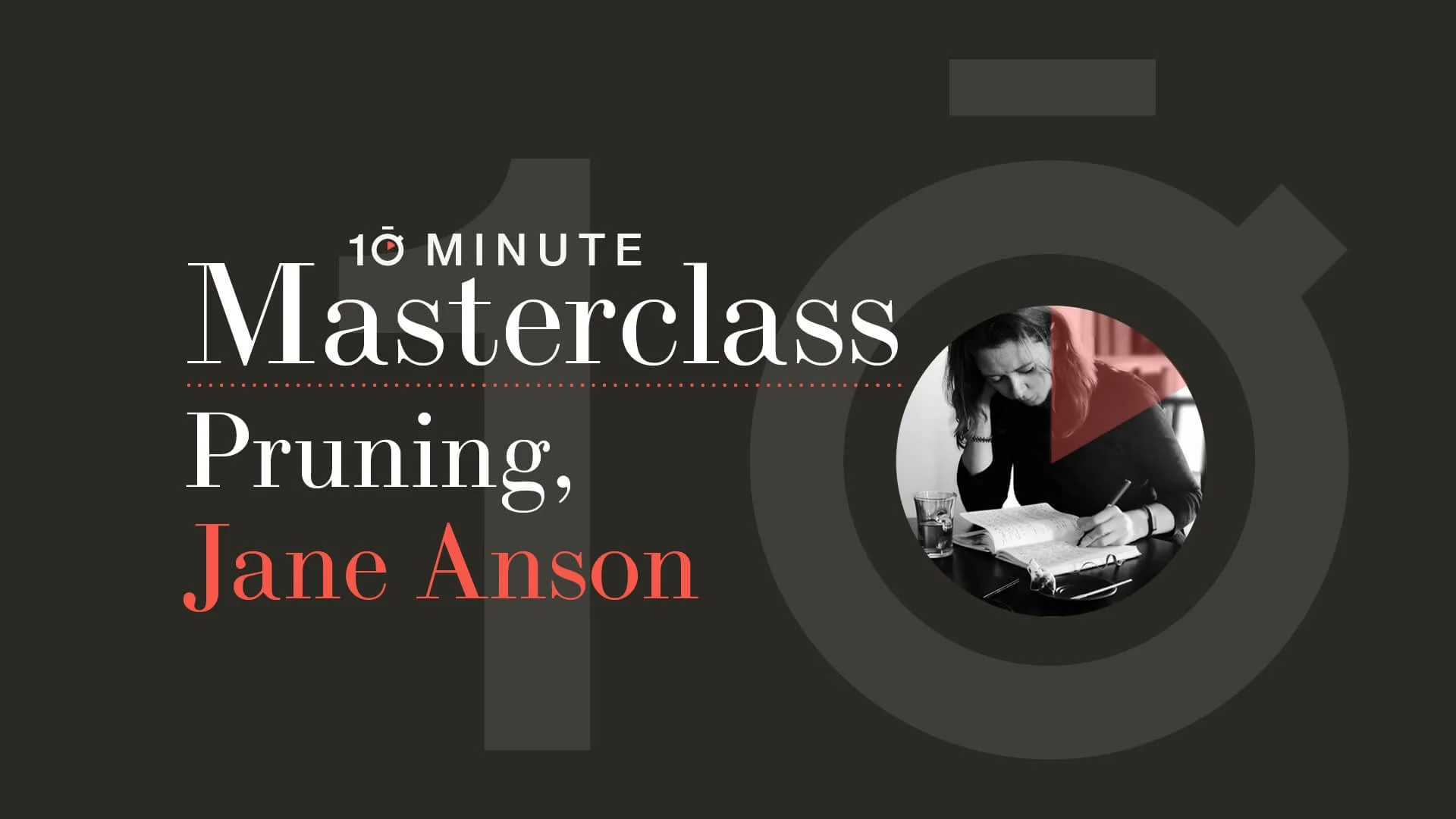▻ Pruning with Jane Anson
In conversation with Jane Anson
Episode Summary:-
Every winter, in our wine world at least, you see workers out in the vineyards pruning vines. In this 10-Minute Masterclass, Jane Anson discusses the not-so-simple art of pruning and exactly how it affects the vine, and the wine in your glass.
Pruning is a task carried out to manage the vigour of the vines, regulating the fruit to optimise the yields required, and preparing the vines for the next year. It is an essential part of the vineyard year: On its own, a vine would keep growing, and one vine could sprawl out and cover up to a hectare of land. As Bordeaux estates can have 10,000 vines per hectare, it is critical to give one square metre of space per vine plant.
The season for pruning starts in December or January and lasts until March, which is when the vine is dormant. The choice of when to prune depends on many factors, including the size of the estate, as more time is needed, and later pruning where there is a frost risk.
There are many different types of pruning, but at its most basic the pruning system differentiates between cane (removing the previous year’s fruiting wood) and spur, also known as cordon, where the trunk is allowed to grow and extend horizontally, not cut back each year, with shoots that grow directly from it over many years.
The best-known spur pruning is named “guyot,” after the 19th century French scientist who created the technique; a single fruiting cane is used each year, growing out of the central section of the plant, either extending out only on one side, (single guyot) or two canes each side (double guyot). In many regions there are rules to follow, and it depends on row width, vineyard density, and other factors.
Pruning practices differ hugely between estates. Jane gives the example of Château Carmes Haut Brion who prune in January and February, and slightly later in some areas due to frost, whereas Château Haut Bailly begins in December through to February. At Lafleur in Pomerol, a small estate of 4.5 hectares, each vine is individually pruned and all the estate team are trained to prune, except their accountant. Over in Napa, Philippe Bascaules, when he arrived at Inglenook in 2011, experimented with pruning even earlier, in his search for freshness.
Estates can also prune later in the season, dropping some grapes, known as “green harvesting”. Again, this is an individual choice by each winery.
If you want to know more about pruning Jane recommends a reprint of the book “Modifications à Apporter à la Taille de la Vigne/Changes to be Made to Vine Pruning, written by Rene Lafon.)
Jane’s obscure fact? Bordeaux holds an annual pruning competition, known as the Secateur d’Or. Competitors have 25 minutes to prune 15 vine plants. The last winner was Luis Ribeiro of Château Ducru-Beaucaillou.
Running Order:-
-
0.00 – 4.57
“Pruning is essential for balancing the vigour of the vines.”
– Why producers prune their vines.
– The best time of year to prune.
– Different types of pruning.
– Which pruning method is followed. -
4.57 – 10.50
“In many regions, there are rules to follow in different appellations.”
– Who does the pruning.
– How pruning differs between estates and wine regions.
– Green harvesting.
– Where to learn more about pruning.
– Obscure Fact – the Secateur d’Or competition.







Burgundy guru Jasper Morris MW looks at making white Burgundy.